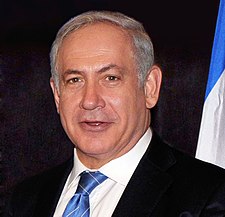 The Palestinian "Arab Spring" is arriving and Israel has no political strategy to deal with it. Instead, Israel used the only weapon in its current arsenal - brute force.
The Palestinian "Arab Spring" is arriving and Israel has no political strategy to deal with it. Instead, Israel used the only weapon in its current arsenal - brute force.
They are extraordinary scenes. Film shot on mobile phones captured the moment on Sunday when at least 1,000 Palestinian refugees marched across no-man's land to one of the most heavily protected borders in the world, the one separating Syria from the Israeli-occupied Golan Heights.
Waving Palestinian flags, the marchers braved a minefield, then tore down a series of fences, allowing more than 100 to run into Israeli-controlled territory. As they embraced Druze villagers on the other side, voices could be heard saying: "This is what liberation looks like."
Unlike previous years, this Nakba Day was not simply a commemoration of the catastrophe that befell the Palestinians in 1948, when their homeland was forcibly reinvented as the Jewish state. It briefly reminded Palestinians that, despite their long-enforced dispersion, they still have the potential to forge a common struggle against Israel.
As Israel violently cracked down on Sunday's protests on many fronts - in the West Bank, Gaza, Jerusalem and on the borders with Syria and Lebanon - it looked less like a military superpower and more like the proverbial boy with his finger in the dam.
The Palestinian "Arab Spring" is arriving and Israel has no diplomatic or political strategy to deal with it. Instead on Sunday, Israel used the only weapon in its current arsenal - brute force - against unarmed demonstrators.
More...





 A spike in Israeli military raids and settler violence across the occupied West Bank is driving...
A spike in Israeli military raids and settler violence across the occupied West Bank is driving... The US Department of Justice has moved to eliminate rules protecting LGBTQ+ people from sexual abuse...
The US Department of Justice has moved to eliminate rules protecting LGBTQ+ people from sexual abuse... A US senator has condemned the Trump administration after she alleged that an Immigration and Customs...
A US senator has condemned the Trump administration after she alleged that an Immigration and Customs... Arafat Qaddous worked construction jobs in Israel.He was one of around 130,000 Palestinians living in the...
Arafat Qaddous worked construction jobs in Israel.He was one of around 130,000 Palestinians living in the...






























